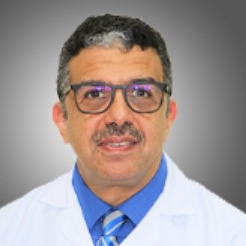Molecular Mechanisms of Angiogenesis in Health and Diseases
A special issue of International Journal of Molecular Sciences (ISSN 1422-0067). This special issue belongs to the section "Molecular Pathology, Diagnostics, and Therapeutics".
Deadline for manuscript submissions: closed (31 May 2022) | Viewed by 29561
Special Issue Editors
2. Physiology Department, Migichan State University, East Lansing, MI, USA
Interests: cardiovascular diseases; medical education; angiogenesis
Interests: angiogenesis; tumor metabolism; membrane transporters: plasma membrane redox; rare diseases; systems biology; polyamine and biogenic amine metabolism; metabolic modelling
Special Issues, Collections and Topics in MDPI journals
Special Issue Information
Dear Colleagues,
Angiogenesis is an essential process for tissue survival, both physiologically during fetus development and wound healing, as well as pathologically in a plethora of diseases such as cancer, obesity, diabetic retinopathy, endometriosis, and skin and bone diseases. More recently, angiogenesis has also been shown to have an important role in tissue adaptation under microgravity and other space environments. The new capillaries that develop in angiogenesis sprout from existing vessels and are usually initiated via hypoxia and a lack of nutrients in the surrounding tissues. Angiogenesis is facilitated by pro-angiogenic factors such as VEGF and FGFs, among other mechanisms, and inhibited by anti-angiogenic factors. The therapeutic potential of regulating angiogenesis is tremendous since it is capable of treating major highly prevalent fatal diseases such as ischemic heart disease, stroke, and cancers. For this reason and others, the field of angiogenesis has been growing exponentially in the last fifty years; however, it is still far from reaching its potential. In this Special Issue, the aims are to provide an update on molecular mechanisms of angiogenesis relevant to various aspects in health and diseases, shed some light on the current development of angiogenesis-related diagnostic and therapeutic approaches, and to point out possible future directions.
Dr. Adel B. Elmoselhi
Prof. Dr. Miguel Ángel Medina Torres
Guest Editor
Manuscript Submission Information
Manuscripts should be submitted online at www.mdpi.com by registering and logging in to this website. Once you are registered, click here to go to the submission form. Manuscripts can be submitted until the deadline. All submissions that pass pre-check are peer-reviewed. Accepted papers will be published continuously in the journal (as soon as accepted) and will be listed together on the special issue website. Research articles, review articles as well as short communications are invited. For planned papers, a title and short abstract (about 100 words) can be sent to the Editorial Office for announcement on this website.
Submitted manuscripts should not have been published previously, nor be under consideration for publication elsewhere (except conference proceedings papers). All manuscripts are thoroughly refereed through a single-blind peer-review process. A guide for authors and other relevant information for submission of manuscripts is available on the Instructions for Authors page. International Journal of Molecular Sciences is an international peer-reviewed open access semimonthly journal published by MDPI.
Please visit the Instructions for Authors page before submitting a manuscript. There is an Article Processing Charge (APC) for publication in this open access journal. For details about the APC please see here. Submitted papers should be well formatted and use good English. Authors may use MDPI's English editing service prior to publication or during author revisions.
Keywords
- angiogenesis
- endothelial cells
- vascular endothelial growth factors (VEGFs)
- pro-angiogenic factors
- anti-angiogenic factors
- hypoxia
- cancer
- ischemic heart diseases
- obesity
- diabetic retinopathy







